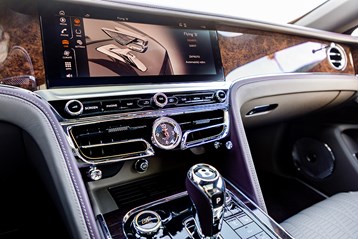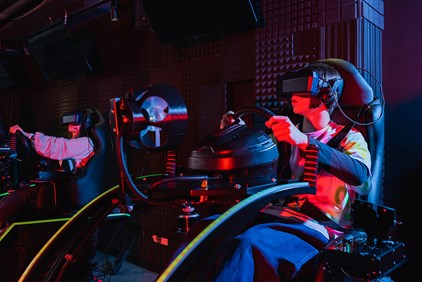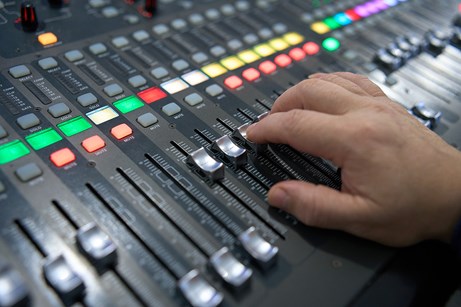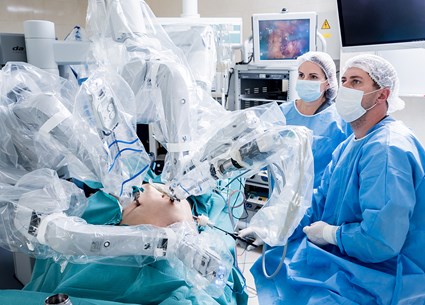Emerging Automotive, Consumer, Industrial, and Medical Applications Drive Sensor Integration in Traditional Switch Form Factors
 By Tanios BouRamia | June 02, 2022
By Tanios BouRamia | June 02, 2022
Whatever the industry, next generation devices must incorporate more functionality to continue meeting customer expectations. Automotive vehicles have seen an AM/FM car radio transform into a multimedia infotainment cluster. A surgeon’s tools used to be relatively simple hand tools but now are integrated into a remote robotics platform that offers razer’s edge positional accuracy. The increasing complexity of modern video game consoles has seen controllers expand from a set of pushbuttons to high performance dual axis thumbsticks as pro gamers seek out any advantage against their rivals. In all these applications and more, traditional electromechanical switches have seen continuing advancements through the integration of sensor technologies that augment their functionality in new and compelling ways. Understanding these developments is critically important for anyone looking to stay competitive in these markets.

Figure 1: Modern vehicles pack entertainment, environmental comfort, phone, emergency services, and more into the "infotainment" cluster. Rotary encoders, capacitive touch, and other sensors underpin the HMI switch functionality in sleek, user-centered designs
While many automotive applications are seeing the integration of sensors to provide more information and control to users, of particular interest is the infotainment console and vehicle access systems. In the case of infotainment, the increasing adoption of screens to display information necessitates a way to interact with that information. Rotary encoders are an effective means of providing an easy-to-use method for a driver or passenger to navigate onscreen menus, whether to search through multimedia for entertainment, navigation services, or telecommunications. Optical disc incremental encoders provide an improvement in overall life as compared to simpler mechanical encoders. Adding a TFT screen to an integrated actuator cap or the use of capacitive touch in a rotary form factor allows offloading of screen real estate for secondary functions like interior light control. In vehicle access, magnetic proximity sensors provide an easy, contactless means of detecting the open/close status of doors, trunks, hoods, gas caps, or any other access points. More ruggedized versions are equally effective in commercial and off-road vehicles where there may be more extreme environmental conditions presented like oil, dirt, dust, grease, water, or other contaminants that could impact otherwise sensitive electronics.

Figure 2: Next-generation gaming goes beyond the basic controller to include full-scale replica interfaces with Virtual Reality for the ultimate simulation experience. Thumbsticks and encoders help provide some of the HMI points of contact in these high-end gaming rigs.
High-end consumer applications including next-generation consoles, virtual reality simulators, flight simulators and even professional grade drones and all require familiar switch functions but with added capabilities to manage their greater degree of user engagement. Thumbsticks using ratiometric potentiometers provide precision control of movement including specialized variants with maintained contacts for throttle/power control. Larger navigation switches utilizing non-contact magnetic Hall Effect technology can incorporate tri-axis functionality with the durability to hold up against active use in flight simulators and other more advanced applications.

Figure 3: Capacitive touch, encoders, and multi-axis navigation switches empower professional audio, lighting, and video applications in mixing studios, broadcast booths, event venues, and more.
Industrial applications ranging from professional audio and video production to automation and security have all seen increasing adoption of sensor-enhanced interfaces to accomplish greater functionality. Capacitive touch sensor panels provide tunable, responsive controls for equalizers, lighting panels, and more in professional audio equipment. Navigation switches for control interfaces and magnetic proximity sensors used for limit switches empower industry 4.0 automation, actuators, and other robotics platforms. Magnetic proximity sensors provide contactless, hermetically sealed detection of unexpected opening of windows, doors, and other building interfaces for security and monitoring in both residential and commercial properties.

Figure 4: Whether it's heavy medical equipment like this robotic surgical platform or a more portable device like an AED, navigation switches and encoders can provide the necessary interfaces to utilize these life-saving solutions
Medical devices, perhaps more than any other market category, have seen impressive and explosive technological transformation over the last few years. At one end of the size spectrum, portable medical devices like automatic emergency defibrillators (AEDs) continue to get smaller while also incorporating more ease-of-use to improve their intended outcome: saving someone’s life. Integrated rotary clickwheels and encoders provide a simple, speedy means of navigating settings and options on these kinds of devices to deliver medical care as quickly and as correctly a possible to a patient in distress. Large permanently installed equipment in hospitals and labs like robotic surgical platforms likewise need an easy way for surgeons and other medical staff to interact with the equipment. Multifunction navigation switches can provide precision positional control of medical instruments to a remote operator while rotary encoders can provide necessary menu and settings navigation. Magnetic proximity sensors can provide limit detection for medical robots in a manner similar to their industrial counterparts.
The automotive, consumer, industrial, and medical markets are all seeing an increasing rapidity of adoption and usage of new, innovative functions for their users. The devices that we interact with become more complex and yet must remain familiar enough that a user still feels confident interacting with them. As the world leader in custom and catalog high-quality switch solutions, C&K prides itself on providing its customers the right solution for their switching and sensing needs. We’re proud to offer a wide plethora of sensing products, available through this newly released flyer. If you’re interested in learning about any of C&K’s switch and sensor solutions, please contact www.ckswitches.com/contact-tech-support/
See our newest sensor products live at Sensors Converge in San Jose, CA June 28-29 Booth #1134
